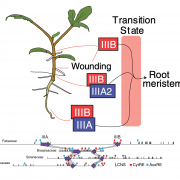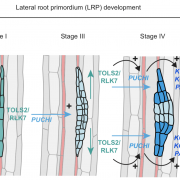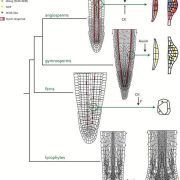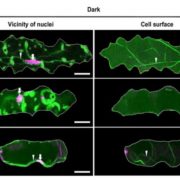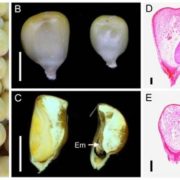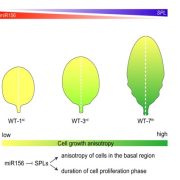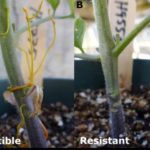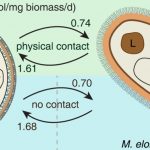Molecular mechanisms driving switch behavior in xylem cell differentiation (Cell Reports)
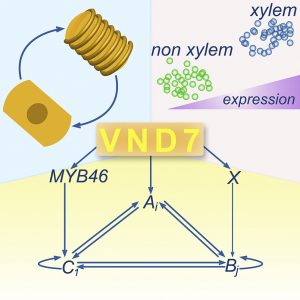 Xylem is involved in the movement of water and mineral nutrients through the plants from the roots to leaves; its cells are not totipotent and undergo programmed cell death. VASCULAR-RELATED NAC-DOMAIN (VND) transcription factors are master switches of xylem cell differentiation in Arabidopsis and much has been learned about their transcriptional regulatory network. However, little is known about the molecular mechanisms that regulate the terminal cell differentiation in xylem, and how these mechanisms are distinct from the differentiation of plant cells that maintain totipotency. Turco et al. investigated how VND7 influences xylem differentiation by generating whole-root and single-cell transcription data, with the aim to screen for potential VND7 downstream target genes mediating the developmental switch to xylem cell identity. Of 15 candidate switch genes only four are VND7 direct targets (A). Even if VND7, MYB46, and MYB83 transcription factors are described to be interconnected in feedforward loops, only one gene has been found as a MYB46 direct target (C), and 10 neither VND7 nor MYB46 targets (B). The authors identified several distinct classes of downstream target genes, and new candidate genes for participation in the developmental switch for xylem cell differentiation. This work provides insight into properties that control the formation of a cell type critical for plant development/growth and the transition of plants from water to land. (Summary by Francesca Resentini) Cell Reports 10.1016/j.celrep.2019.06.041
Xylem is involved in the movement of water and mineral nutrients through the plants from the roots to leaves; its cells are not totipotent and undergo programmed cell death. VASCULAR-RELATED NAC-DOMAIN (VND) transcription factors are master switches of xylem cell differentiation in Arabidopsis and much has been learned about their transcriptional regulatory network. However, little is known about the molecular mechanisms that regulate the terminal cell differentiation in xylem, and how these mechanisms are distinct from the differentiation of plant cells that maintain totipotency. Turco et al. investigated how VND7 influences xylem differentiation by generating whole-root and single-cell transcription data, with the aim to screen for potential VND7 downstream target genes mediating the developmental switch to xylem cell identity. Of 15 candidate switch genes only four are VND7 direct targets (A). Even if VND7, MYB46, and MYB83 transcription factors are described to be interconnected in feedforward loops, only one gene has been found as a MYB46 direct target (C), and 10 neither VND7 nor MYB46 targets (B). The authors identified several distinct classes of downstream target genes, and new candidate genes for participation in the developmental switch for xylem cell differentiation. This work provides insight into properties that control the formation of a cell type critical for plant development/growth and the transition of plants from water to land. (Summary by Francesca Resentini) Cell Reports 10.1016/j.celrep.2019.06.041


